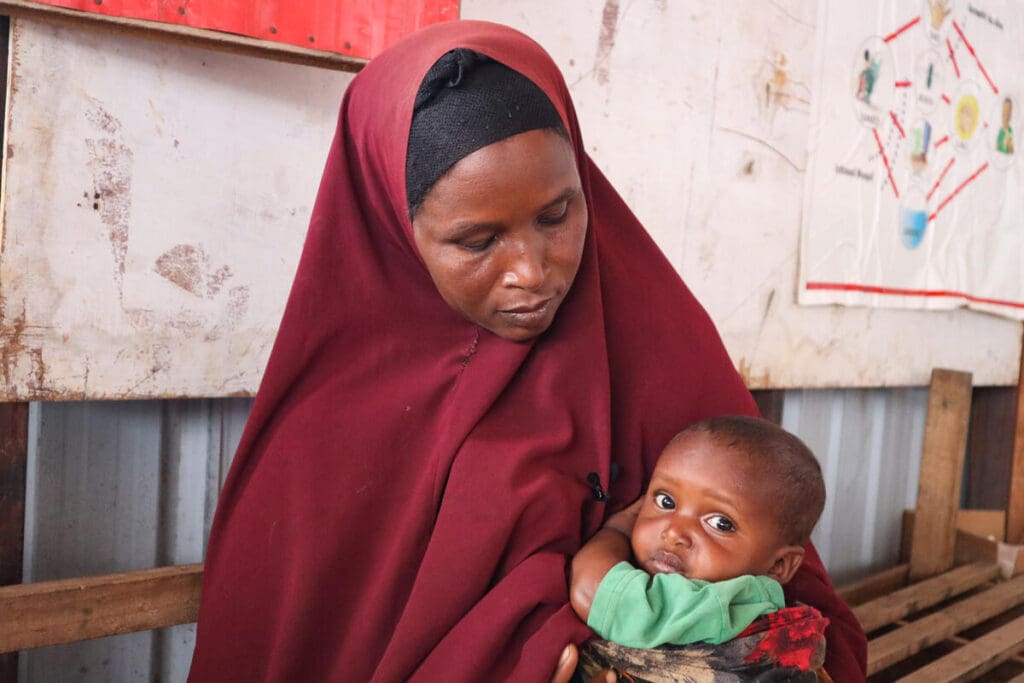Hunger Emergency Far From Over in Crisis Hit Horn of Africa

NAIROBI – Millions of people in the Horn of Africa are trapped in a hunger emergency as the region lurches from crisis to crisis: The longest drought in recorded history has given way to rains and flash flooding, the United Nations World Food Programme (WFP) warned today. Food and energy prices remain stubbornly high, and the impact of the conflict in Sudan continues to reverberate around the region.
“Conflict, climate extremes and economic shocks: The Horn of Africa region is facing multiple crises simultaneously. After five consecutive failed rainy seasons, flooding has replaced drought, killing livestock, damaging farmland and further shattering livelihoods,” said Michael Dunford, U.N. World Food Programme regional director for Eastern Africa. “And now the outbreak of conflict in Sudan is forcing hundreds of thousands of people to flee their homes.”
When the region’s long-awaited rains arrived in March, they should have brought some relief. But instead, flash flooding inundated homes and farmland, washed away livestock and closed schools and health facilities. More people were forced from their homes including 219,000 people in southern Somalia.
The last three years of drought have left more than 23 million people across parts of Ethiopia, Kenya and Somalia facing severe hunger. Mortality and malnutrition rates remain unacceptably high. Consecutive failed harvests and high transportation costs have pushed food prices far beyond the reach of millions in the region. A food basket in Eastern Africa in March 2023 cost 40% more than a year ago. In Ethiopia, fuel prices have almost doubled in a year.
It will take years for the region to recover, and humanitarian assistance is a lifeline. Yet limited humanitarian resources are being stretched further still by the conflict in Sudan, which has sent over 250,000 people fleeing into neighboring countries such as Ethiopia and South Sudan where hunger is already high.
Last year, the U.N. World Food Programme and partners launched a rapid scale up of lifesaving assistance in drought-hit Somalia, Kenya and Ethiopia. This scale-up helped to keep famine at bay in Somalia. But now, the U.N. World Food Programme is facing a funding crunch and is forced to scale back assistance.
“The U.N. World Food Programme’s rapid expansion of lifesaving assistance helped prevent famine in Somalia in 2022. But, despite the emergency being far from over, funding shortfalls are already forcing us to reduce assistance to those who still desperately need it. Without sustainable funding for both emergency and climate adaptation solutions, the next climate crisis could bring the region back to the brink of famine,” said Dunford.
By the end of 2022, the U.N. World Food Programme was distributing food assistance to a record 4.7 million people in Somalia. But in April, funding shortfalls forced the U.N. World Food Programme to reduce this to 3 million people. Without additional funds, the U.N. World Food Programme will have to further reduce the emergency food assistance caseload in Somalia to just 1.8 million by July. This means that almost 3 million people will not receive support, despite their continuing needs.
The U.N. World Food Programme urgently requires $810 million over the next six months to keep lifesaving assistance going and to invest in long-term resilience programs in the Horn of Africa.
Notes for the Editor: High res. photos are available here.
# # #
The United Nations World Food Programme is the world’s largest humanitarian organization saving lives in emergencies and using food assistance to build a pathway to peace, stability and prosperity for people recovering from conflict, disasters and the impact of climate change.
Follow us on Twitter @WFPUSA and @wfp_Africa




